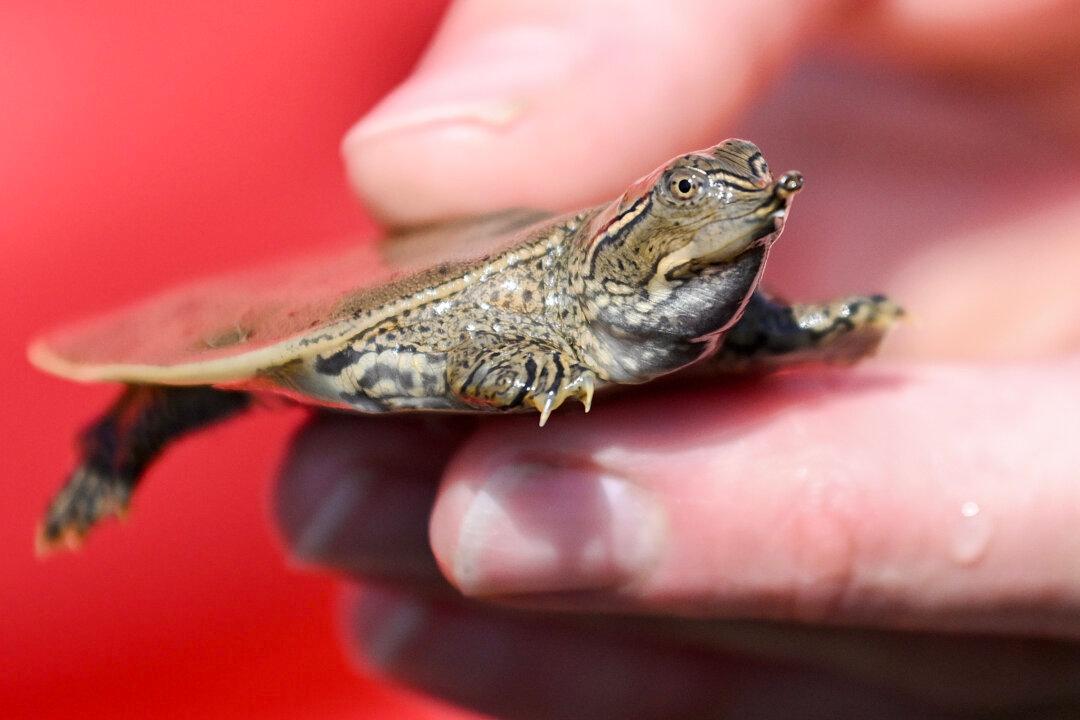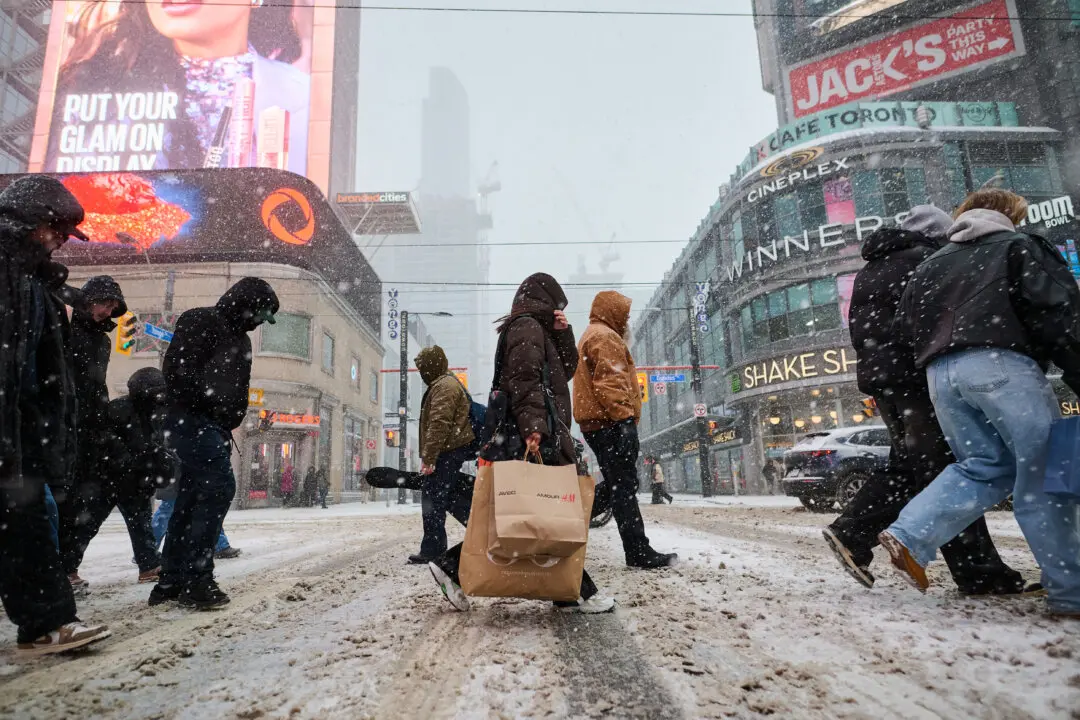The weeks-old baby turtle wriggles its legs as it’s picked up from a blue tupperware bin and placed gently into a river south of Montreal. In a flash it’s off, swimming deftly through the murky water before disappearing from view.
The little green-brown creature twice the size of a loonie is one of about 140 endangered baby spiny softshell turtles being released into a river near Lake Champlain, near the U.S. border, as part of a zoo-led project to help save the species.





